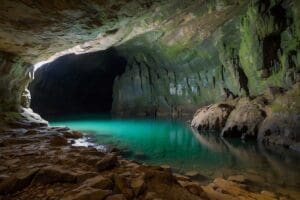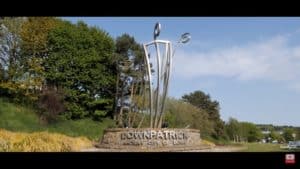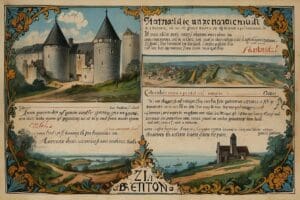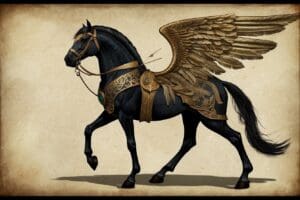Floating Heritage: Exploring the Irish Curraghs’ Cultural Legacy
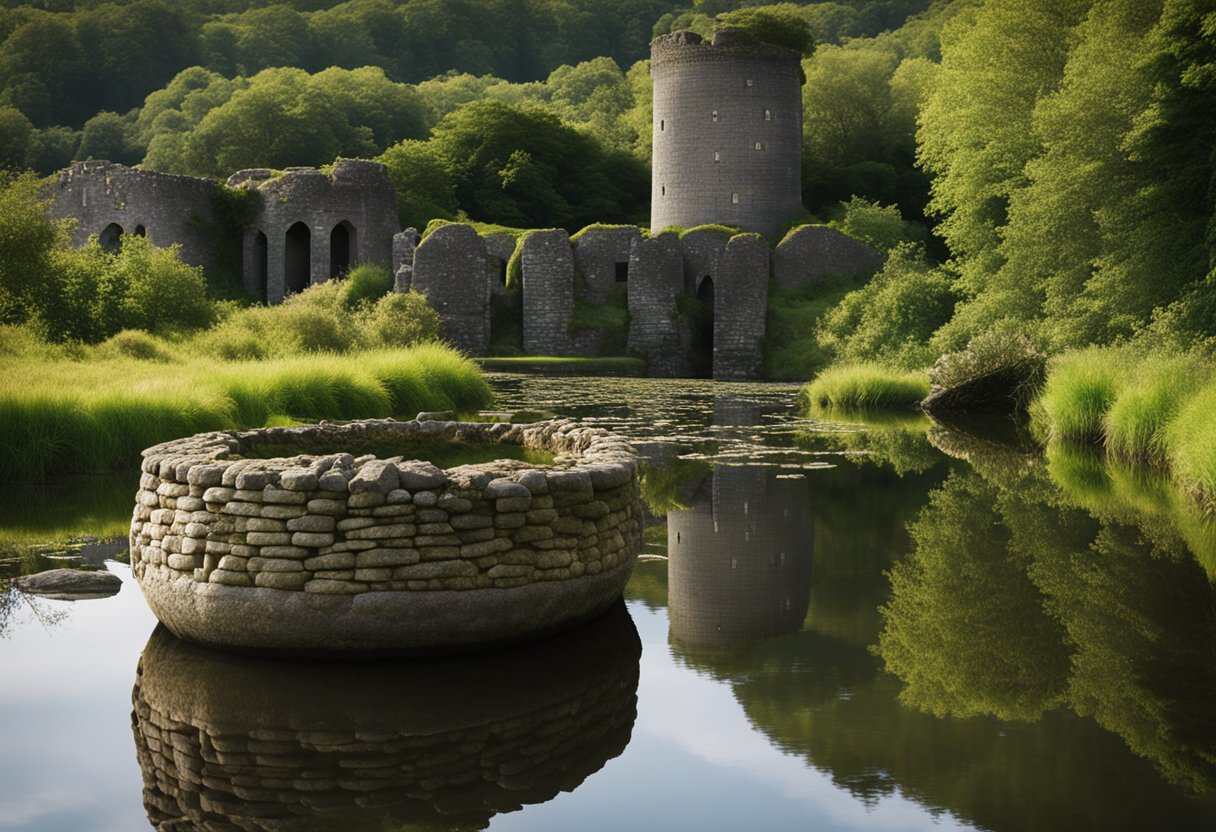
Updated On: April 15, 2024 by Maha Yassin
The Irish Curragh, a vessel intrinsically woven into the cultural fabric of Ireland, stands as a testament to the country’s rich maritime heritage. With its distinctive construction, the Curragh is not just a boat; it embodies generations of craftsmanship, tradition, and survival. These lightweight yet sturdy vessels were traditionally framed with wood or wicker and covered in animal skin. Although canvas has largely replaced the original materials, the essence of the curragh’s design remains true to its ancient origins.
Used for millenniums, ranging from subsistence fishing to navigating the vast Atlantic waters, the Curragh’s design varies from region to region, each adapted to the local environment and needs. Our understanding of these boats is deepened by the legendary tales of seafarers and their curraghs embarking on epic expeditions, illustrating their resilience in treacherous seas. Today, curraghs continue to be a symbol of cultural identity, especially along the west coast of Ireland, and play a key role in contemporary efforts to sustain and celebrate Irish maritime culture.
Our dedication to preserving this valuable aspect of our ancestry is mirrored in the numerous initiatives aimed at teaching curragh-building techniques to new generations. This facilitates both an appreciation for our maritime past and an assurance that curragh crafting and the values it represents will persist.
History of Irish Curraghs
Curraghs, or traditional Irish boats, have been integral to Ireland’s maritime history. Their origins trace back to the Neolithic period when settlers first arrived on the island’s shores. These early inhabitants relied on such vessels for fishing and transportation.
Our ancestors crafted these boats using materials readily available: wickerwork frames covered in cowhide or other animal skins stitched together. The absence of iron tools meant that the construction relied heavily on simple yet effective methods that have stood the test of time.
Regarding structure, curraghs featured a sturdy keel, with gunwales providing additional strength. This design ensured the boats were seaworthy and versatile enough to navigate both inland waterways and the open sea. Throughout history, curraghs were utilised for many purposes, ranging from fishing and transport to warfare and trade.
One of the most famous legends involves St Brendan, a monk, who travelled in a curragh to Great Britain and possibly even the shores of Europe. These voyages are well-documented in ecclesiastical literature and accounts by continental writers like Solinus.
James Hornell’s studies compare curraghs to British coracles, highlighting the wider influence of Irish boat-making. Additionally, the monasteries played a crucial role, possibly utilising curraghs for communication and transporting goods across Ireland and beyond during the Middle Ages.
This rich history is recorded in writings like those of Breccán and alive in contemporary celebrations of our floating heritage. Curraghs remind us of the resilient and innovative spirit propagated across Ireland’s history.
Design and Construction
In Irish maritime heritage, the craftsmanship of the curragh represents an intersection of artistry and practicality. Our exploration of its legacy reveals a vessel historically rooted in the necessity of daily life, now preserved as a cultural emblem.
Traditional Materials
Curraghs have a distinct and durable design, historically built using materials readily available in their natural environment. The frame is traditionally crafted from timber, with a fine latticework of hazel rods and sally twigs, creating the skeleton of the craft. Originally, animal skins were stretched over this frame, though tarred canvas became more common in later versions. The hull’s material was pivotal for waterproofing and ensuring the curragh’s survival in the challenging Atlantic conditions. Oars and thole pins were integral to propulsion and navigation before including the sail and mast, allowing wind assistance.
Modern Adaptations
With time, modern innovations have gently woven into the fabric of curragh construction. Contemporary builders often use calico or synthetic materials instead of traditional animal hides coated with tar or other waterproofing agents to maintain the curragh’s seaworthiness. While the frame might still honour the original timber and latticework, enhancements in design have allowed these crafts to withstand the elements better. Although modified, modern curraghs are a testament to our heritage, symbolising resilience and the enduring legacy of ancient maritime craftsmanship.
Cultural Significance
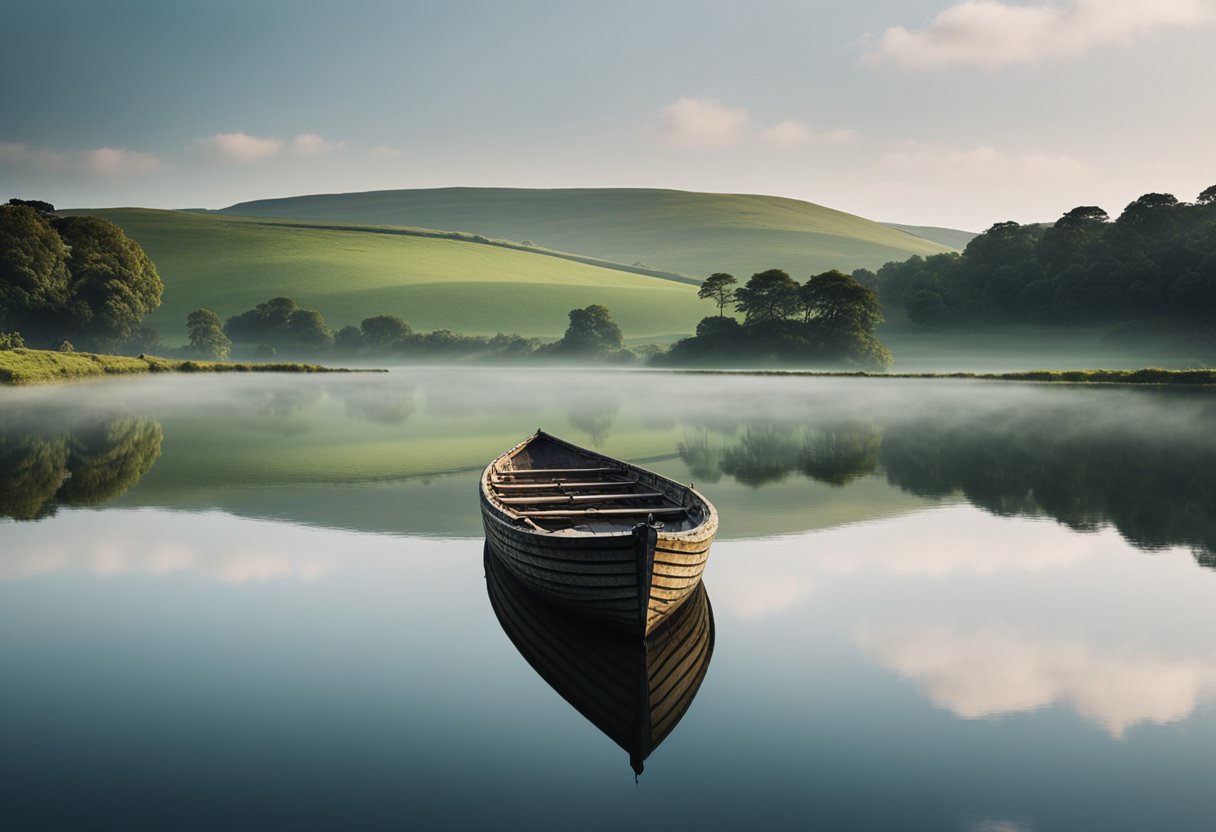
The Irish Curragh, a traditional boat crafted with natural materials, is an emblem of our rich maritime heritage. Craftsmen along the west coasts of Ireland have been building these boats for centuries, carefully fashioning them from a framework of wooden laths concealed under waterproofed animal hides. Characterised by its light and nimble structure, the curragh, or naomhóg, has long been vital for survival and transport.
Tradition and Community
Curraghs were essential for fishing and travelling on many coastal communities, particularly those dotting islands like Rathlin. They signify the resilient spirit and adaptability of those who lived in concert with the challenging sea. To this day, we celebrate the curragh through festivals and races, acknowledging the skill and continuity of tradition it represents.
Literary Echoes
The curragh’s importance has transcended beyond utility to inspire our literature. It symbolises journey and reflection, often cited in works that explore our collective psyche and bond with the ocean.
Impact on Heritage
Renowned among various traditional boats, including the Welsh coracle, curraghs hold a unique position in our cultural narrative. Their unmistakable silhouette is an artefact of our ancestral knowledge and intimate relationship with the sea.
As we continue to sail these ancient vessels, we pay homage to our past and actively preserve the living practice of a craft deeply interwoven with our cultural identity. By engaging with and supporting this timeless art, we ensure the story of the Irish curragh endures for future generations to cherish.
Geographic Distribution
Curraghs, traditional Irish boats, have a distinctive presence across various regions in Ireland and have influenced boat-building traditions beyond Irish shores.
Usage in Irish Regions
We find curraghs predominantly along the western seaboard of Ireland. In Connacht, specifically, these vessels are ingrained in the local heritage, with areas like Mayo and Galway showcasing a long-standing tradition of curragh use. The South Mayo Curragh owes its design to the need to cross choppy lake waters, while the Achill Island Curraghs are crafted to navigate the Atlantic. Often, these curraghs are characterised by their unique adaptations that respond to the local maritime conditions.
- Donegal: These curraghs are seen along the rugged coast, being effective for fishing.
- West Clare Curragh Club: Community-led efforts sustain traditional curragh construction.
- Dublin: Fewer curraghs are seen, yet they hold a cultural significance in maritime events.
- Limerick: Along the Shannon estuary, curraghs mimic early designs for riverine navigation.
Influence Beyond Ireland
The influence of Irish curraghs extends into Scotland, where similar boats known as coiréil are utilised. They are especially common on islands like Rathlin Island, often for short trips and fishing. In addition, the curragh’s design inspired boat builders throughout Britain and even Europe, solidifying the craft’s reputation as a vital contribution to maritime heritage. The adaptability and enduring design of the curragh have thus left an imprint on boat-building traditions far afield from its Irish origins.
Types of Curraghs
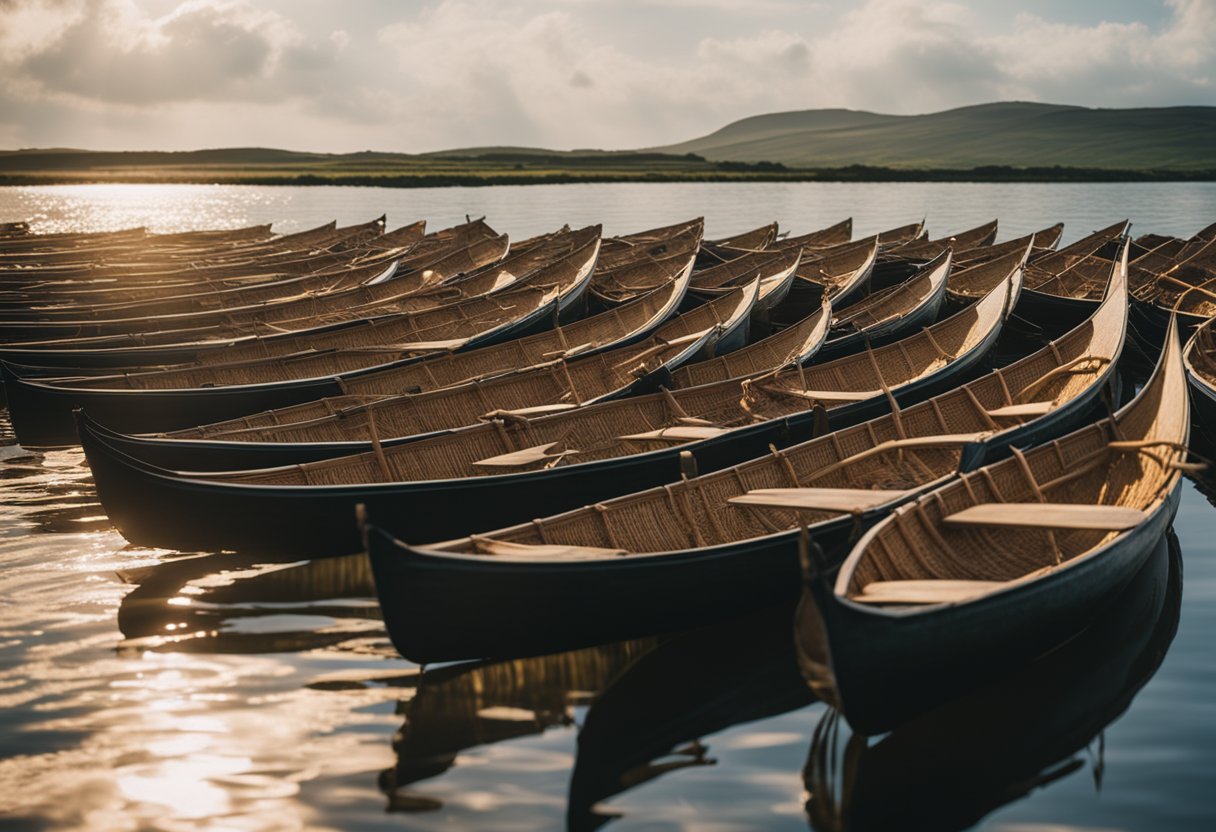
Curraghs embody a remarkable nautical heritage, with distinct variations fashioned to meet the diverse conditions and needs along Ireland’s coastlines.
Regional Variations
Ireland’s maritime traditions have given rise to various curragh designs, each with characteristics shaped by their regional origins. The West Coast curraghs, often known as naomhóg or bád Martha, are recognisable by their elongated shape, conducive for traversing the Atlantic swells. Meanwhile, river currachs tend to be smaller and more manoeuvrable, suited for the calmer inland waterways. These crafts illustrate the adaptability of curragh construction to the demands of different marine environments.
Functional Differences
Curraghs exhibit various functional design features: those used for fishing usually comprise a sturdy, broad-beamed body to withstand turbulent sea conditions. In contrast, rowing boats used along rivers may have slimmer profiles for speed and agility. Some curraghs are even equipped with sails, transforming them into versatile sea boats capable of longer voyages. The structural details, including the distinct curvature of the bow and stern, further distinguish each curragh’s purpose, from leisurely rowing to braving the open sea for a catch.
Curraghs in Maritime Activities
Curraghs hold a significant place in the maritime heritage of Ireland, serving various functions from fishing and hunting to trade, transport, and even recreational activities.
Fishing and Hunting
Traditionally, curraghs have been a central part of coastal life in Ireland, primarily employed for fishing and hunting. These vessels, often described as sea or ocean-going boats, have a sturdy construction suitable for the rugged Irish coast. Their lightweight framework, historically composed of animal skins stretched over a wooden frame and now more commonly replaced by canvas, enables fishermen to navigate effortlessly and silently, enhancing their ability to catch fish and even seabirds in coastal waters.
Trade and Transport
Trade and transport are also areas where curraghs have proved invaluable. As sturdy rowing boats without a keel, they have historically facilitated the movement of goods and people between the mainland and the islands. Their resilience and adaptability to the often harsh conditions of the Atlantic Ocean made them a practical choice for inter-island commerce. Curraghs have effectively linked communities through trade, playing a crucial role in the interdependence of Irish coastal economies.
Recreation and Sport
In modern times, using curraghs has transcended mere utility and become a part of recreation and sport. Numerous festivals and events include curragh races as a highlight. Sailing regattas and the esteemed Great River Race in London are noteworthy among these. Such competitions are not only a test of skill and endurance for participants but also a celebration of maritime heritage, showcasing the enduring legacy of curraghs as a cultural icon.
Preservation Efforts

Preservation efforts for the art and culture of Irish curraghs involve community engagement and institutional backing, which are essential for safeguarding these traditional crafts.
Community Initiatives
We recognise the vital role of communities in preserving the knowledge and skills necessary to build and maintain Irish curraghs. Groups like the West Clare Currach Club actively construct and repair curraghs, using methods passed down through generations. They often source local materials such as timber and cowhide, ensuring the process remains authentic. These initiatives preserve the craft and reinforce a sense of identity and heritage linked to the curragh tradition.
Institutional Support
On an institutional level, noteworthy entities such as the National Museum have undertaken responsibility for protecting the cultural heritage associated with Irish curraghs. The curraghs, often tanned using age-old methods, are displayed and curated to educate the public about their historical significance and the craftsmanship involved. Through grants, exhibitions, and educational programs, heritage institutions ensure that the legacy of Irish curraghs remains prominent and appreciated within Irish culture.
Technological Evolution
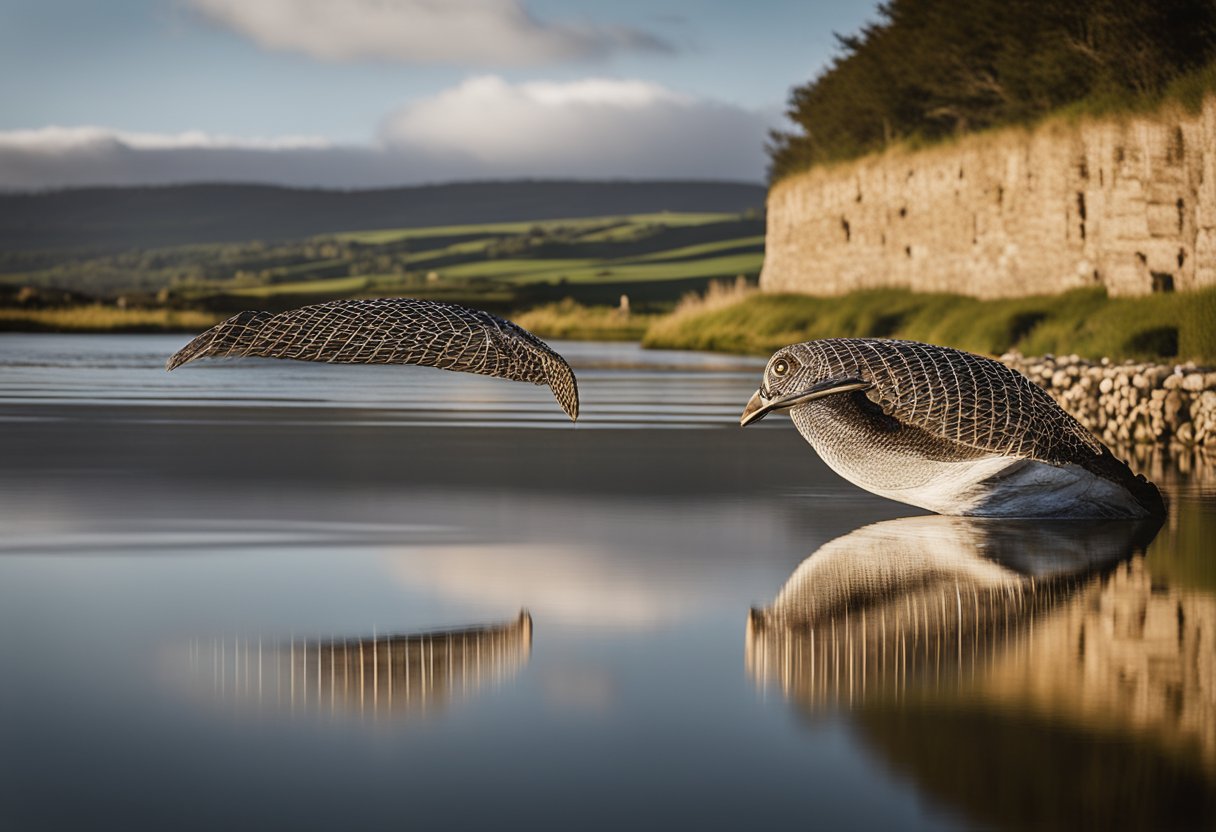
The construction and utility of Irish currachs have undergone a notable transformation over the centuries. Initially, these artisanal vessels were crafted with natural materials found locally, such as animal skins and timber. The structure primarily included a wooden framework over which animal hides were stretched and secured with thick tar to ensure waterproofing.
As technological advancements were made, canvas replaced animal skins, offering enhanced durability and easier maintenance. The introduction of metal, particularly iron tools, allowed for more refined construction methods, creating sturdier currachs capable of withstanding tough maritime conditions.
The development of currachs did not stop at the materials used; it also extended into their design elements:
- Keels: Added to increase stability in choppy waters.
- Masts and Sails: Introduced to harness wind power for navigation, broadening their utility.
- Rudders: Improved steering mechanisms to aid in their manoeuvrability.
These innovations enabled currachs to evolve from simple fishing boats to larger vessels capable of carrying armed men and cargo. Despite these technological evolutions, currachs have retained their cultural essence and heritage, symbolising a significant part of Irish maritime tradition. Today, they continue to capture the spirit of Ireland’s maritime past while showcasing the adaptability of its people to technological change.
Curraghs in Modern-Day
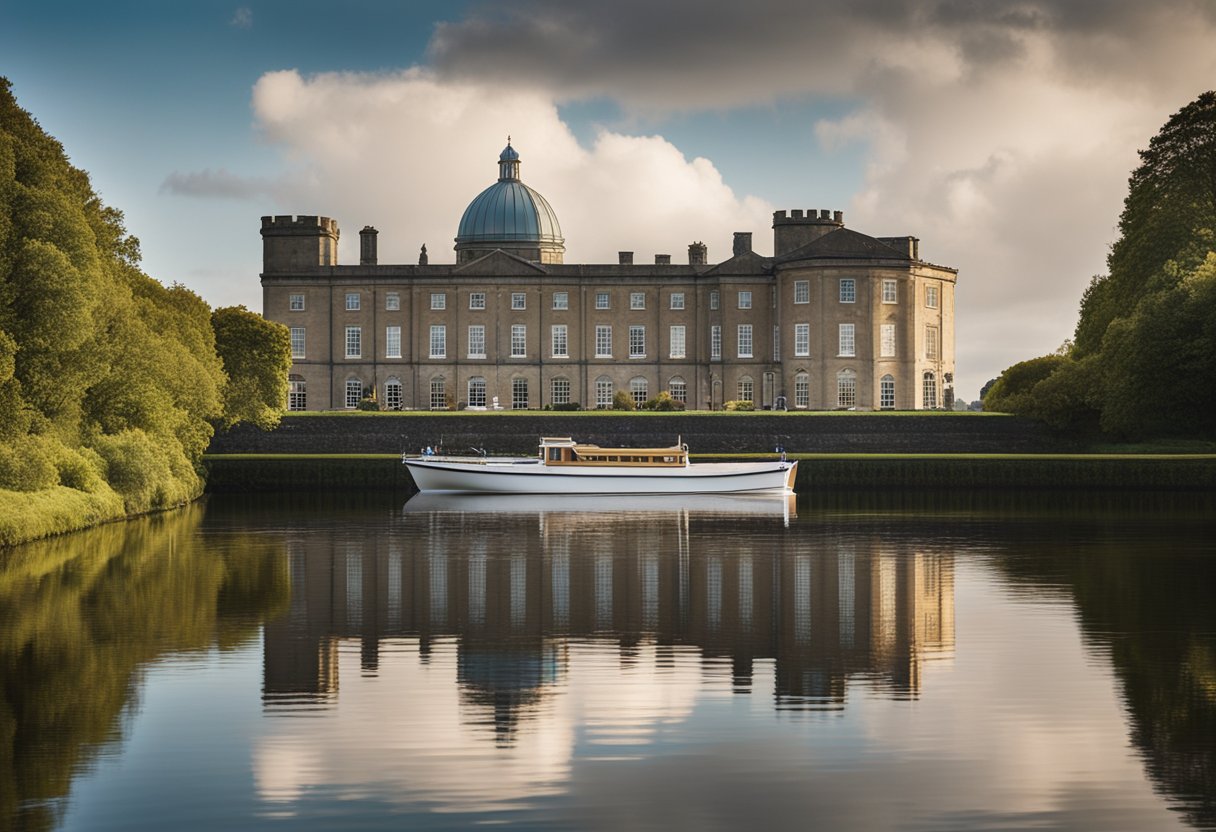
Today, curraghs maintain their place in Irish culture by marrying tradition with contemporary uses, prominently through racing events and educational initiatives.
Curragh Racing
We see curragh racing as a competitive pursuit that continues along the west coasts of Ireland, enlivening the Atlantic waters with the spirit of heritage. These races often feature at local festivals and regattas, attracting competitors and spectators alike. Currach regattas honour the enduring craft by pitting modern rowing teams against each other in these distinct rowboats, fostering community and continuity of seafaring prowess.
Educational Projects
Educational projects utilise the currach to connect people, especially the younger generation, with our maritime history. Workshops offer hands-on experiences, teaching the art of currach construction and navigation skills, tying these crafts to broader conversations about recreation and the sustainability of traditional practices. By rowing the same waters once travelled by their ancestors, participants bridge the gap between past and present.
Notable Curraghs and Expeditions
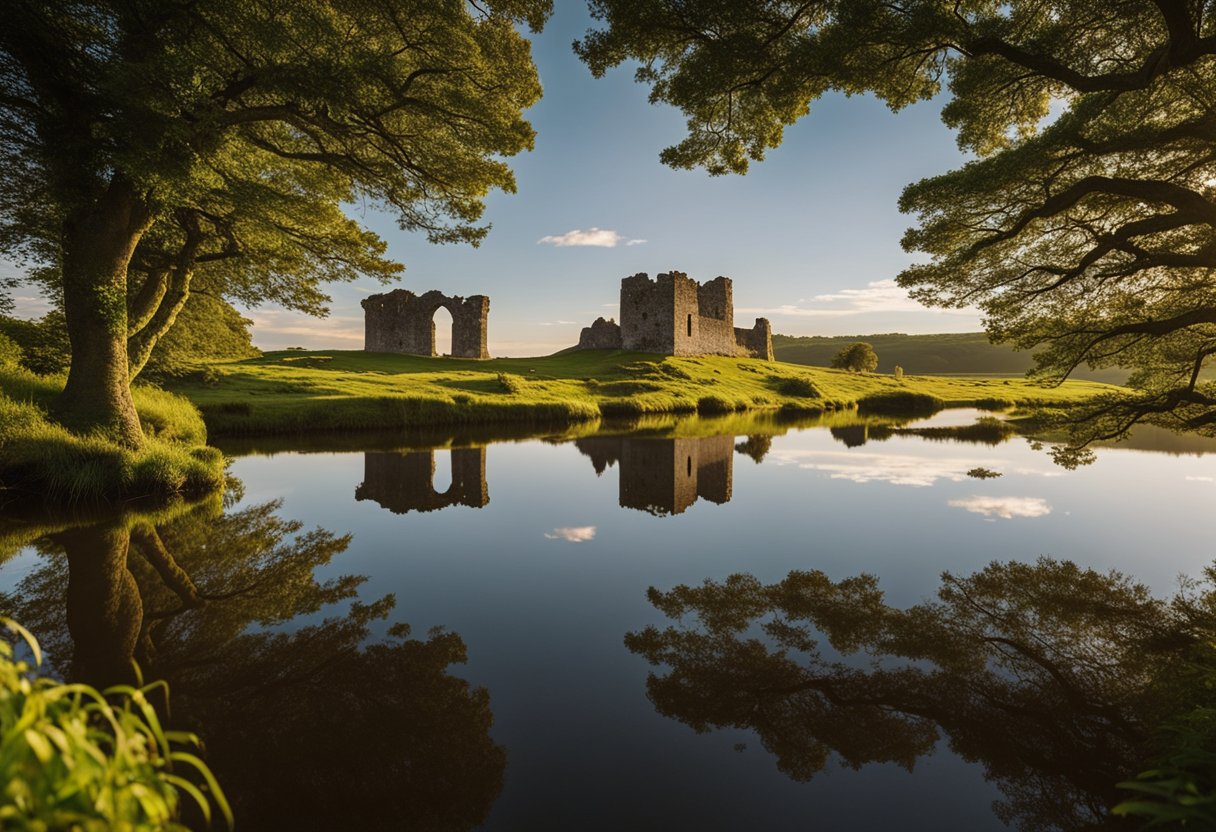
The Irish curragh, a traditional and versatile vessel, is as much a part of Ireland’s maritime legacy as the formidable voyagers it carried. St. Brendan the Navigator, often celebrated in our folklore, is alleged to have embarked on a transatlantic voyage in a curragh during the early medieval period. Some historical research suggests he may have reached as far as the Americas long before Columbus’ famed voyages.
In 1976, Tim Severin, an explorer and writer, set out to test St. Brendan’s epic by replicating his journey in a historically accurate curragh. Christened The Brendan, Severin’s curragh was constructed using traditional methods, highlighting the incredible craftsmanship behind these ocean-going boats. Severin completed the Atlantic crossing, corroborating the seaworthiness of curraghs and adding a modern chapter to exploration history.
Captain Thomas Phillips also deserves mention for his innovative use of curraghs. In the 17th century, he led expeditions along the western coast of Ireland, utilising these sturdy vessels for navigating treacherous currents close to shore. His journeys serve as another testament to our enduring heritage as skilled seafarers.
Here we present you a brief chronicle of these iconic vessels and their historic expeditions:
| Individual | Vessel | Expedition | Achievements |
|---|---|---|---|
| St. Brendan | N/A | Transatlantic (legendary) | Hypothetical voyage to the Americas. |
| Tim Severin | The Brendan | Transatlantic (1976-1977) | Confirmed the curragh’s capability for long-distance travel. |
| Capt. Thomas Phillips | N/A | Coastal Ireland (17th Century) | Proved curraghs’ efficacy in coastal navigation. |
This legacy of seafaring and exploration prominently showcases the Curragh’s role in our maritime heritage, affirming our connection to the vast and unpredictable seas.
Frequently Asked Questions
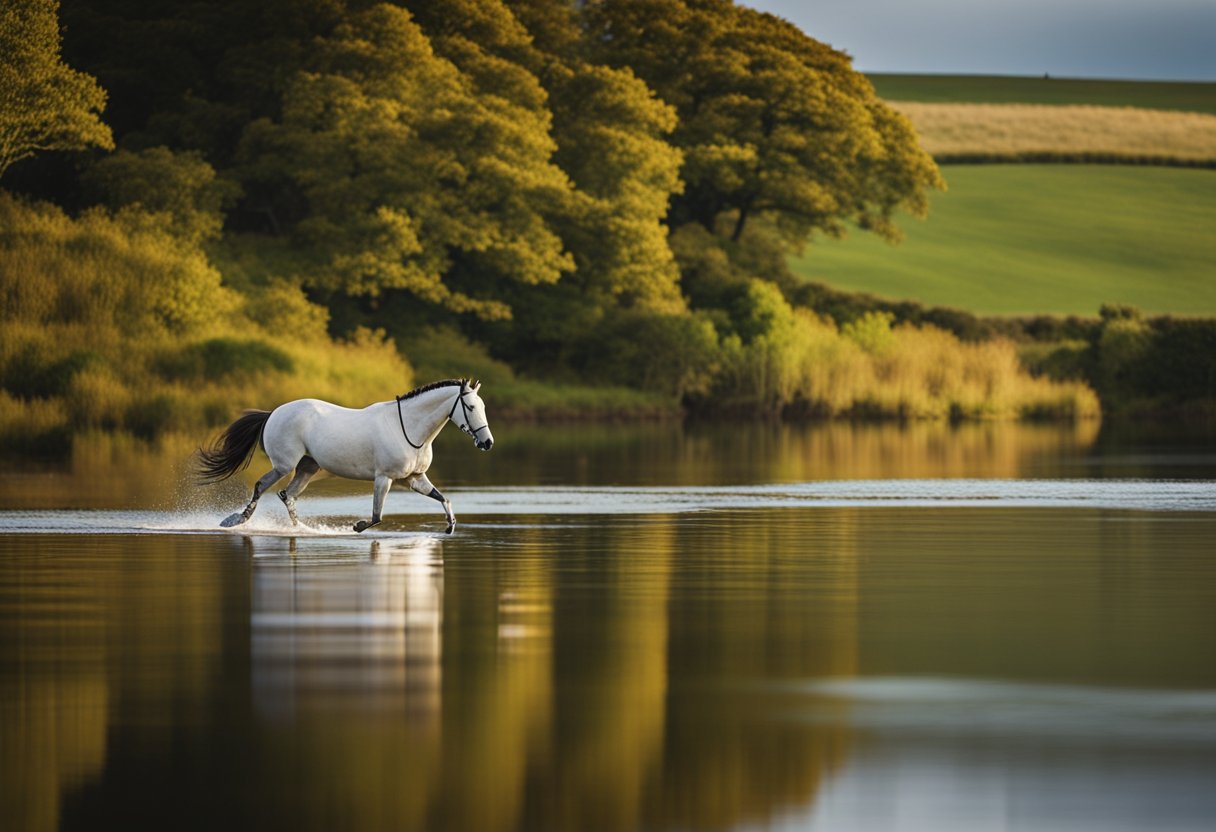
In this section, we’re addressing common inquiries about the Irish currach, providing insights into its historical and cultural importance, and examining the distinct skills involved in its construction.
What is the historical significance of Irish curraghs in maritime traditions?
Irish curraghs are pivotal in maritime history, serving as a testament to the country’s maritime heritage. Traditionally used for fishing and transport, these boats have sustained coastal communities for centuries.
How is the construction of a currach distinct from other traditional Irish boats?
The construction of a currach is remarkable for its lightweight frame of latticework covered with animal hides or canvas. This construction method differs markedly from more rigid, wood-planked boats, providing a durable yet flexible vessel.
Can you explain the role of hide-covered boats in Irish exploration and trade?
Hide-covered boats, like curraghs, were instrumental in early Irish exploration and trade, enabling navigation across treacherous waters to trade goods and connect with distant cultures. Their resilience and manoeuvrability were key assets in these endeavours.
What cultural practices and rituals are associated with Irish curraghs?
Irish curraghs are not just functional vessels but are imbued with deep cultural significance, often featuring in local festivals and regattas celebrating maritime traditions and community bonds.
How do curraghs reflect the craftsmanship and ingenuity of Irish boat-building?
Curraghs showcase the craftsmanship and ingenuity intrinsic to Irish boat-building. The methods used in their creation reflect a deep understanding of materials and their interaction with the challenging Atlantic environment.
What are the similarities and differences between a Welsh coracle and an Irish currach?
The Welsh coracle and Irish currach are small, lightweight boats historically used in river and coastal waters. However, curraghs are generally larger and better suited to the open sea, reflecting the specific needs of Irish maritime practices.


